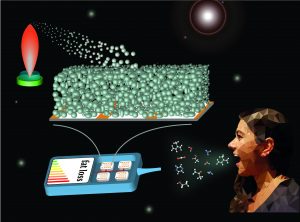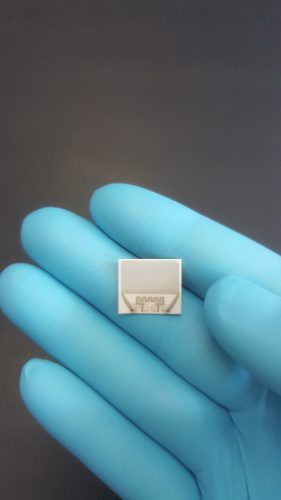Society’s embrace of dietary interventions and increased physical activity ensues to relieve obesity as a global health threat, but such interventions can only go so far. Dieting and exercise have seemingly helped athletes and those who wish to shed a few extra pounds, but the market lacks an affordable, accessible and accurate technology to monitor progress in body fat loss. Consider bringing a ten-thousand-dollar mass spectrometer—the necessary machinery to collect fat loss data, comparable in size to an office printer—to the gym. It may seem extreme to go to such lengths to measure fat burning, but until now, there was little else to rely on.
New research curtails these concerns. Investigators at ETH Zurich and the University Hospital Zurich have recently developed a real-time breath acetone sensor to detect fat burning through a person’s exhalations during physical exercise. Andreas Güntner, a co-author of the study and a postdoctoral researcher in the lab run by Professor Sotiris Pratsinis, explains that the group targeted acetone because it is the most volatile byproduct of body fat burning, or lipolysis. During body lipolysis, byproducts like acetone move into the bloodstream and eventually find their way to the pulmonary alveoli in the lungs, where they can be released from the body via exhalation.

Detecting acetone in exhaled breaths is not very simple, however. “It is rather challenging to accurately detect acetone in breath as it occurs at trace level concentrations—typically parts per million—among more than 800 chemical species,” Güntner said. To solve this, the researchers decided to coat the sensor with a highly porous film of tungsten trioxide doped with silicon atoms. The highly porous nature of this film allows for easy diffusion of gas molecules and offers a large surface area for sensing acetone at various concentrations. The researchers used silicon to stabilize the tungsten trioxide because the resulting chemical compound is highly sensitive, selective and stable, allowing for the sensor to detect acetone exclusively.
To test the sensor, the team collaborated with pulmonary specialists including the Director of the Department of Pulmonology, Malcolm Kohler, at the University Hospital Zurich. Twenty volunteers completed three thirty-minute sessions of moderate cycling on an ergometer to stimulate lipolysis, followed by a resting period. During and after the periods of exercise, the researchers measured breath acetone profiles by asking the volunteers to blow into a tube that was fixed to the acetone sensor.
“We observed large variations from person to person,” Güntner said. “While some volunteers showed increasing breath acetone concentrations—indicating enhanced body fat burn—already after a short work-out, it took some others almost ninety minutes of training.” These results were confirmed by mass spectrometry and not only indicated that the sensor could successfully detect acetone as a marker of lipolysis, but interestingly also provided insight into each volunteer’s individual metabolic state. Parallel blood measurements of the biomarker beta-hydroxybutyrate—a standard method for monitoring body fat metabolism—agreed with the data collected by the acetone breath sensor, ensuring that the acetone sensor measurements were indeed accurate.
Alongside these results, the small size and low cost of this acetone breath sensor prove it to be advantageous over other similar instruments. According to Güntner, the chip is the size of a one-cent euro coin (comparable in size to a US dime) and is fabricated from low-cost components, making it ideal for integration into a device that can be used at home or at the gym. Current systems used to measure breath acetone include indirect calorimetry and mass spectrometric techniques—methods which are complex, lack portability and cost thousands of dollars. Portable breath acetone tests are already available for use, but existing models are either inaccurate, not reusable, or incapable of detecting acetone in real-time.
While the researchers refine their prototype breath acetone sensor, health and fitness fans can look forward to a new method of personalizing and optimizing their training routines. The researchers are optimistic about the future of their one-size-fits-all sensor. “I believe this device could be quite attractive for athletes to optimize their training regimens and personal fueling tactics,” Güntner said. “But also for those who would like to guide dieting toward effective fat loss.”

